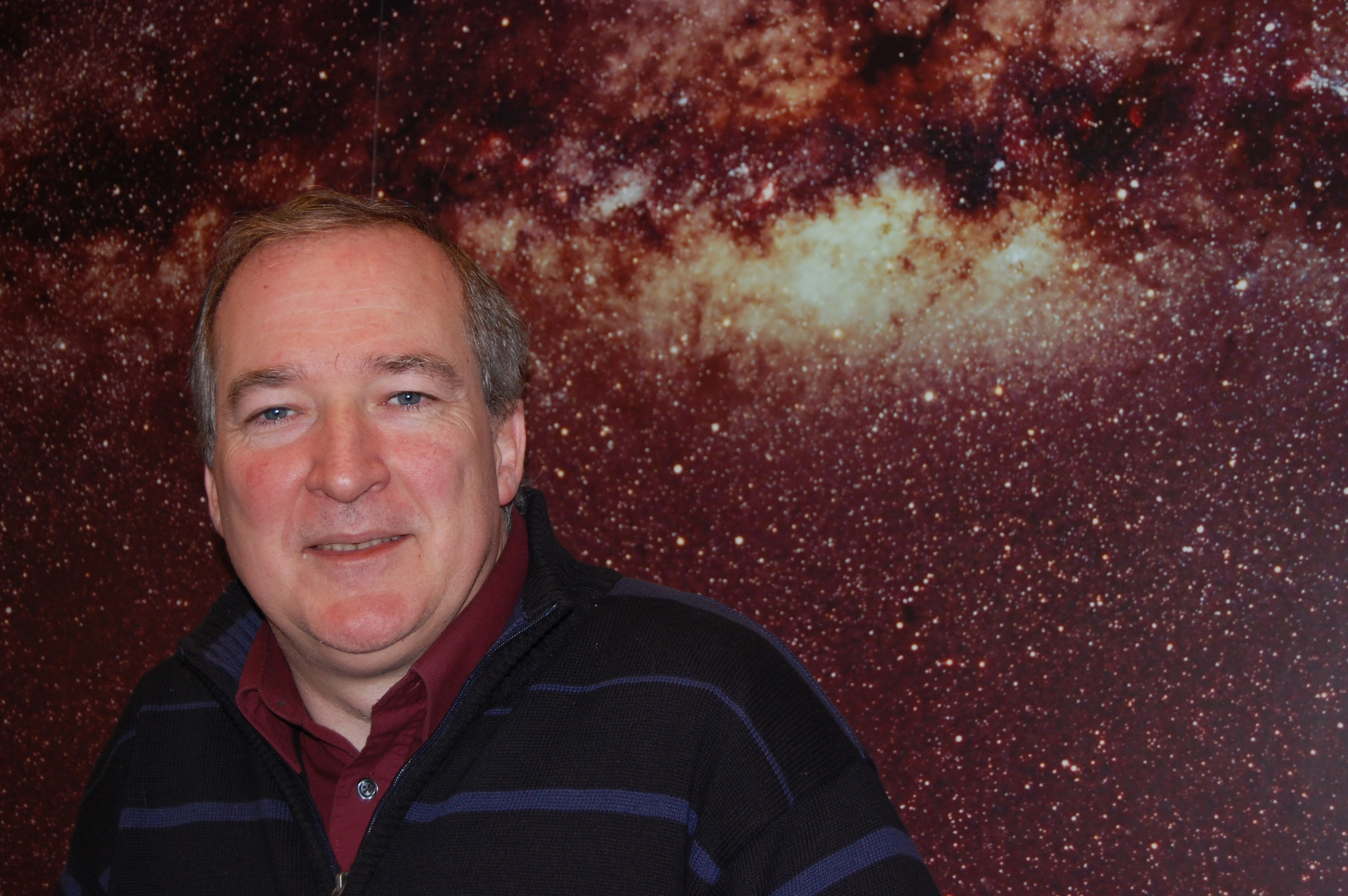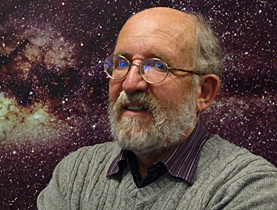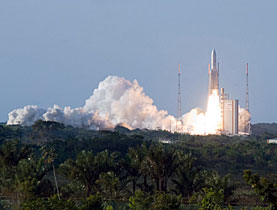Bringing ET out of the realm of sci-fi

Is there life beyond Earth? A few years ago most scientists would have said ‘no’ but opinions are changing as our understanding of the universe grows.
Stéphane Udry, a professor in the astronomy department of Geneva University, tells swissinfo.ch why he thinks we are not alone – and why he believes any extraterrestrials out there are benevolent.
An avid reader of science fiction, Udry was attracted to astrophysics because it is not purely theoretical. His PhD in Geneva was on the modelling of galaxies, and after post-doctoral studies in the United States, he joined the Geneva Observatory in 1994.
It was the year before the observatory’s Michel Mayor and Didier Quéloz discovered the first exoplanet – a planet orbiting a star outside our solar system.
Since then more than 400 have been found – and Udry is at the centre of what is still a world-beating team.
swissinfo.ch: What makes you so sure there is life elsewhere in the universe?
Stéphane Udry: Obviously it’s my own personal opinion. There is no formal proof, but we are beginning to put together a number of indications that make us think it does exist.
We are looking for places where life could develop. In other words, rocky planets. And we are starting to find some – not yet like planet Earth, more like super-Earths, close to their star, so quite hot. But we are definitely moving towards the possibility of finding a planet like Earth, at the right distance from its star.
That’s one aspect. The other is that all the chemical elements needed to make life, like carbon, oxygen and nitrogen, are made in the stars. And the planets are made at the same time as the stars. So the same global process – although it takes some time – includes the formation of the star, the planets and the building blocks of life.
If the laws of physics are the same everywhere in the universe, you have all you need to make life. Why would Earth be the only place it has developed?
swissinfo.ch: You are presuming that life depends on the chemistry of carbon, in liquid water, as it is on Earth?
S. U.: It’s perfectly possible to believe that it could be a combination of other elements. But then, it’s a question of probabilities. Carbon is the chemical element which has the greatest potential to combine with others. It’s also one of the most abundant elements in the universe. So simply in terms of the likelihood of it happening, carbon is a front runner.
swissinfo.ch : Have you come to believe in it bit by bit, or was it your search for life that made you start looking for exoplanets ?
S. U.: Beliefs come with experience, so of course scientific discoveries are going to influence my opinion. But when I was a teenager and an avid science fiction fan, I was inclined to believe in it even before getting on to the scientific facts.
But afterwards it is the task of scientists to put everything on the table and to arrive at a belief that they can back up. I think that’s where we are at the moment. Thirty or so years ago people were more inclined to think that the appearance of life was so improbable, that it was so complicated to create, that we were probably alone in the universe.
But thanks to what has happened in astronomy, things have now swung the other way, and it is generally accepted – in the scientific community anyway – that life exists elsewhere. And as far as the general public is concerned, the cinema and other media push the idea so hard that plenty of people are convinced that extraterrestrials exist simply because they have seen them on the screen.
It’s another Copernican revolution. Once the Earth was at the centre of the cosmos, then the sun, and then there’s Man too. If we remove Man from his central position, that will really mean a revolution in thinking …
swissinfo.ch: Let’s try and imagine it. How do you envisage a first encounter of the third kind?
S.U.: If extraterrestrials exist and manage to get as far as here, it’ll mean that their technology is way superior to ours. We have only managed to get to the moon, and we aren’t sure that we’ll be able to go back easily even there…
So if they were already somewhere around here, and they were malevolent, we would already be dead by now. So they must be well-disposed. You see, I have a very optimistic way of looking at things.
swissinfo.ch: As you’ve said, it’s early days as far as space travel is concerned. So when will we be flying to the stars?
S.U.: If we were now capable of chartering a huge space ship for a voyage of 20-30 years, with families and everything they needed to survive during the journey – hothouses, animals and things – I don’t think it would be hard to find volunteers.
There are always some people with a spirit of adventure. People who are a little bit crazy, like the ones in the early days of flying, or during the time of the great maritime discoveries. People who are ready to take huge risks to make things move a bit faster.
But at the moment we don’t have the technology. That doesn’t stop us thinking about it, in a perfectly scientific way. There’s also the sociological aspect, how these families are to live, for example. People are thinking about that too, and conducting experiments.
So we are beginning to think about these things, but it’ll take quite a few more decades yet.
Marc-André Miserez, swissinfo.ch (translated from French by Julia Slater)
GJ1214b is the second super-Earth exoplanet to be found.
Its discovery by Stéphane Udry’s team in Geneva, and French and US astronomers, was published in the scientific journal Nature in December.
It is thought to be 75% water ice and 25% iron and silica.
Its mass is between one and ten times that of the Earth, and it orbits a star one-fifth the size of the sun, approximately 40 light years away.
It is thought to have an atmosphere 200km thick, probably composed of helium and hydrogen.
Since it is so close to its star, its surface temperature is presumed to be around 200 degrees, which would make it unsuitable for life as we know it.
It is so close to its star that it takes only a day and a half to orbit it.
However, Udry says the discovery shows that “nature is capable of making objects that are very different from each other”.
The first super-Earth exoplanet, CoRoT-7b, was reported earlier in 2009, and is thought to be predominantly rocky. It is 490 light years away from Earth.

In compliance with the JTI standards
More: SWI swissinfo.ch certified by the Journalism Trust Initiative














You can find an overview of ongoing debates with our journalists here . Please join us!
If you want to start a conversation about a topic raised in this article or want to report factual errors, email us at english@swissinfo.ch.